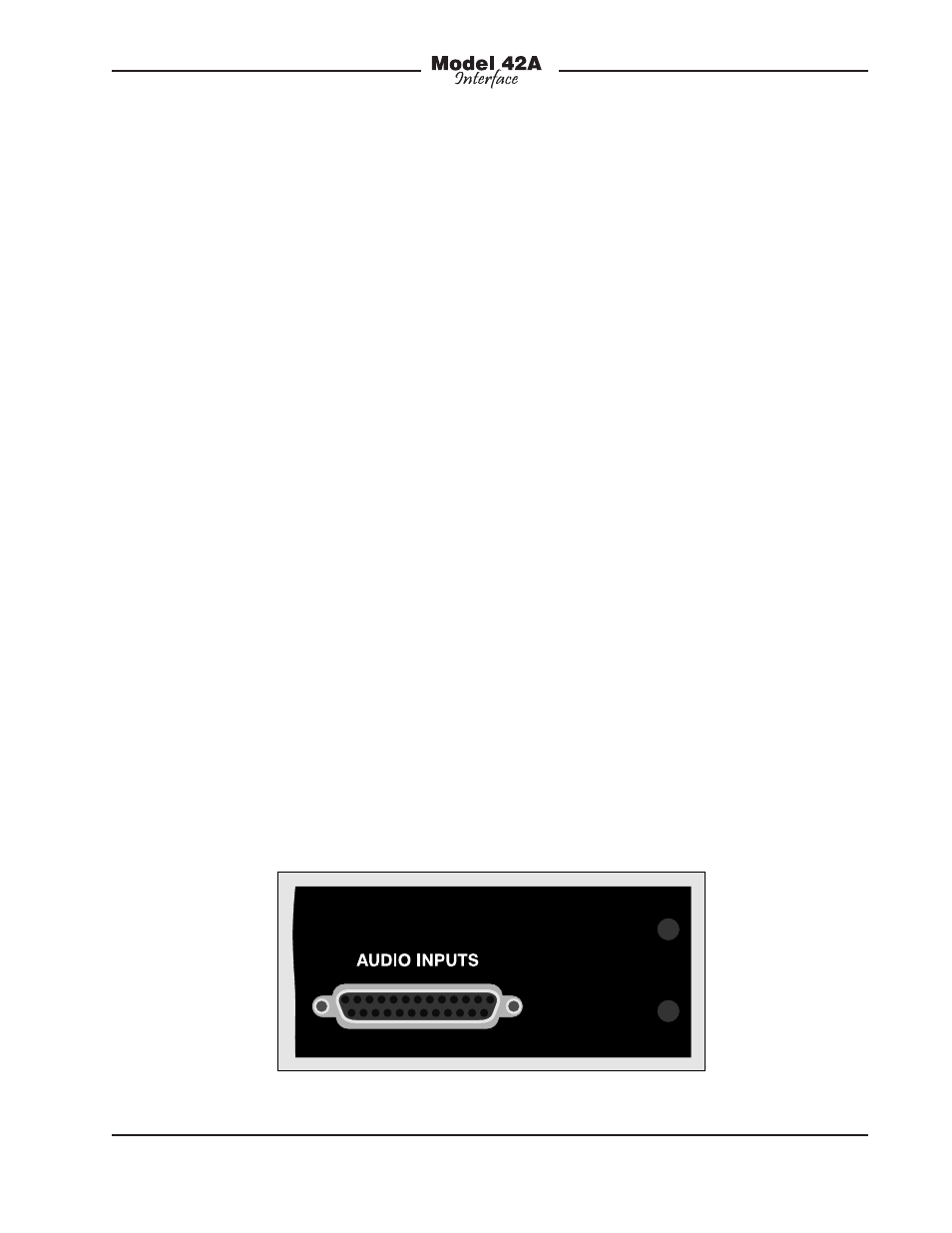Mounting the model 42a, Audio input connections – Studio Technologies 42A 2013 User Manual
Page 9

Model 42A User Guide
Issue 2, December 2013
Studio Technologies, Inc.
Page 9
Mounting the Model 42A
Once the desired mounting location has
been selected, the Model 42A will require
one space (1U or 1.75 vertical inches) in
a standard 19-inch (48.3 cm) equipment
rack. Secure the unit into the equipment
rack using two mounting screws per side.
Audio Input Connections
The Model 42A has eight line-level audio
inputs, arranged as four 2-channel pairs.
Each pair serves one of the four IFB out-
puts. Each IFB output, along with its two
associated audio inputs, is completely
independent. Literally any analog audio
source with a nominal operating level
in the area of +4 dBu can be success-
fully connected. Transformer coupled,
the inputs are compatible with balanced
or unbalanced signals. In many applica-
tions the analog outputs from digital matrix
intercom systems will be connected to the
Model 42A’s audio inputs.
For on-air television applications the IFB
sources are generally configured to pro-
vide a single- or dual-channel cue “feed”
to talent personnel. In such cases chan-
nel 1 of a pair is generally designated as
the “interrupt” channel while channel 2 is
the “program” channel. For other broad-
cast applications, such as live radio, it’s
Figure 2. Detail of back panel showing 25-pin D-subminiature
connector used for audio inputs
possible that a stereo cue source will be
connected. In this situation the left source
would be connected to input channel 1
while the right source would be connected
to input channel 2. This might also be
the case with other professional audio
applications, such as recording and
post-production.
Audio input connections are made by way
of one female 25-pin D-subminiature con-
nector which is located on the Model 42A’s
back panel. A cable harness is required
with a 25-pin D-sub plug (male) on one
end and the desired mating connector(s)
on the other. This cable harness is not sup-
plied by Studio Technologies. (Note that in
some locations the term “cable loom” may
be used instead of “cable harness.”) The
wiring scheme used by the D-sub complies
with the now-ubiquitous one made familiar
by TASCAM® with their DA-88® product.
A wiring harness prepared for connection
to the Model 42A’s audio inputs is identical
to a DA-88-style input harness. Please refer
to Figures 3 and 4 for connection details.
Note that unlike a DA-88-style harness, the
Model 42A’s D-sub connector’s hold-down
screws use 4-40 threads. This complies
with the original design standard for D-
subminiature connectors which used
English rather than metric thread pitch.
